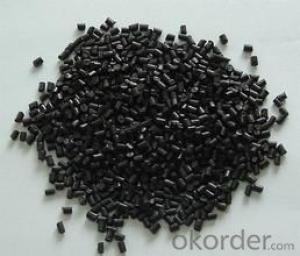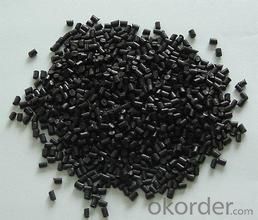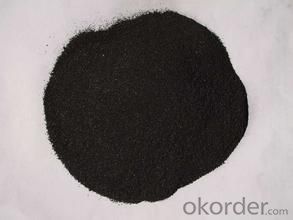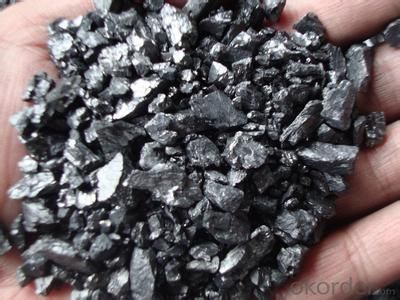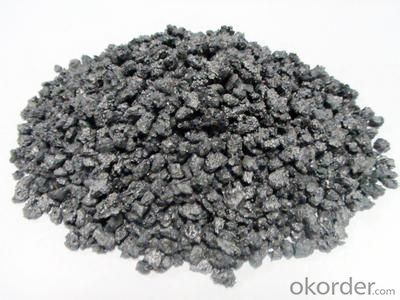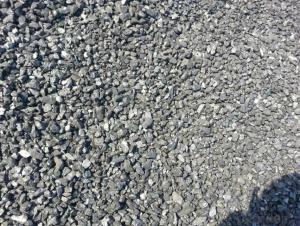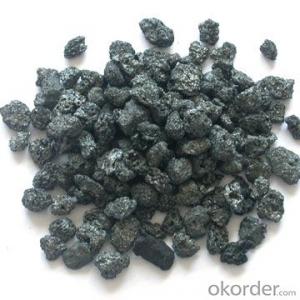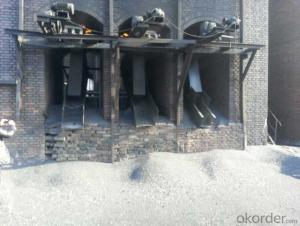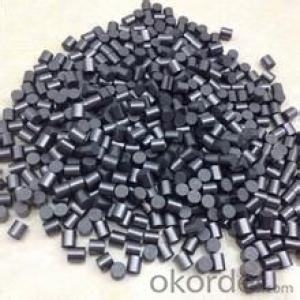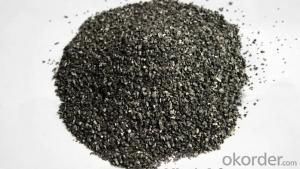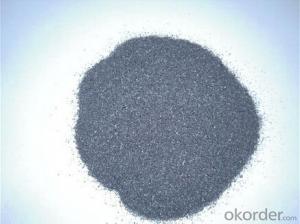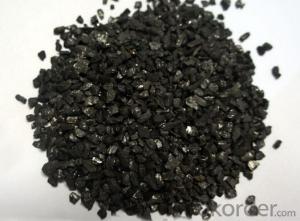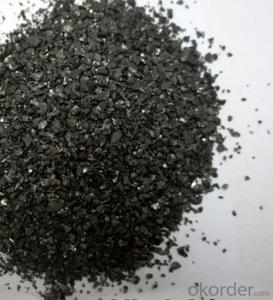90% 92% 93% 94% 95% Recarburizer Recarburizer Carbon addtive Carbide Recarburizer Carburant
- Loading Port:
- Qingdao
- Payment Terms:
- TT OR LC
- Min Order Qty:
- 500 kg
- Supply Capability:
- 30000000 kg/month
OKorder Service Pledge
OKorder Financial Service
You Might Also Like
Specification:
- Professional Manufacturer
- Low Sulphur Content
- High Absorption Rate
Professional Manufacturer
As an ideal carbon additive and intermediate reactor, our recarburizer has been widely used in different industries like metallurgy, chemistry, machinery, electricity, etc. We can make different sizes and grades of recarburizer to meet your special needs.
As one of the leading companies in this field, we have a number of independent intellectual property rights and strong R & D capabilities. Our business ranging from the production of graphite material to precision machining of graphite parts and graphite molds.
Our recarburizer has the features of high carbon, low sulphur, nitrogen and harmful impurities. So it has been widely used for steel-smelting, casting, brake pedal and friction material. | |||||
Product Specification | |||||
Product No. | Fixed Carbon (Min) | Sulphur | Ash | V.M | Moisture |
Max | Max | Max | Max | ||
DT-CA-01 | 97.00% | 0.50% | 1.50% | 1.50% | 0.50% |
DT-CA-02 | 98.50% | 0.50% | 0.80% | 0.80% | 0.50% |
DT-CA-03 | 98.50% | 0.50% | 0.80% | 0.80% | 0.50% |
DT-CA-04 | 98.50% | 0.50% | 0.50% | 0.50% | 0.50% |
DT-CA-05 | 98.50% | 0.35% | 0.80% | 0.80% | 0.50% |
DT-CA-06 | 98.50% | 0.35% | 0.50% | 0.50% | 0.50% |
DT-CA-07 | 99.00% | 0.35% | 0.50% | 0.50% | 0.50% |
DT-CA-08 | 97% | 0.05% | 1.50% | 1.50% | 0.50% |
DT-CA-09 | 98.50% | 0.05% | 0.80% | 0.70% | 0.50% |
DT-CA-10 | 95% | 0.30% | 3.50% | 1.50% | 0.50% |
DT-CA-11 | 99% | 0.03% | 0.50% | 0.50% | 0.50% |
Remark:The above mentioned grain sizes are recommended standard, if your have special requirements, please feel free to contact us. | |||||
Consistent Quality Control
The whole management process is strictly complied with the ISO9001-2000 quality management system. our recarburizer has earned its reputation for exceptional carbon absorption performance and is welcomed by global customers from Japan, USA, Korea, Europe etc.
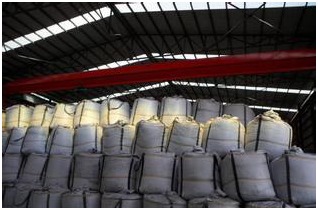
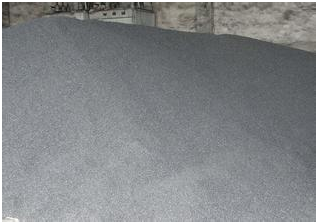
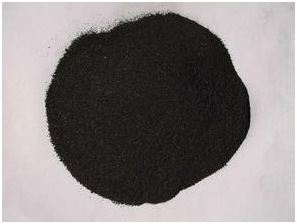
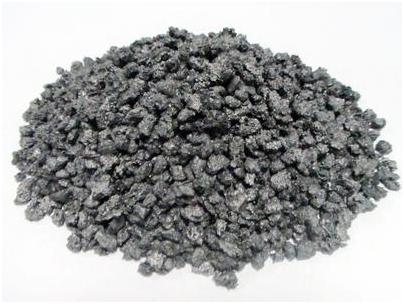
- Q: How does carbon affect the taste of food and beverages?
- The taste of food and beverages can be significantly altered by carbon, which can come in the form of activated charcoal or carbonation. Activated charcoal is known for its ability to absorb impurities and toxins, making it a popular ingredient in various food and drink products. When added to food and beverages, activated charcoal can eliminate unpleasant smells and tastes, resulting in a cleaner and more enjoyable flavor. Carbonation, on the other hand, is widely used in beverages to create a fizzy sensation and enhance the overall sensory experience. By dissolving carbon dioxide gas in liquids under pressure, bubbles are formed when the pressure is released, giving the drink a refreshing and effervescent quality. This carbonation effect can impart a tangy or slightly acidic taste to the beverage, which is often considered pleasant and invigorating. Furthermore, carbonation can also impact the taste of food. For instance, the carbonation found in beer or sparkling wine can help balance the richness of certain dishes, adding a refreshing element and providing a cleanse for the palate. Carbonation can also be incorporated into certain foods, such as bread or pastry dough, to aid in rising and create a lighter texture. It is worth noting that the impact of carbon on the taste of food and beverages can vary depending on the specific application and concentration used. Additionally, the preference for carbonated or charcoal-free options is subjective, as some individuals may prefer non-carbonated alternatives. Ultimately, the use of carbon in culinary applications offers a multitude of possibilities for enhancing taste and providing unique sensory experiences.
- Q: What is carbon emission and what harm does it do? How can carbon dioxide be prevented?
- They also believe that the mechanism of independent coking causes and synthesis gas generation, through the use of appropriate catalyst can avoid from kinetics of coke.It is found that the effect of catalyst by coke gas ratio of material. In 750 degrees, when n (CH4): n (O2) = 2, the catalyst produces a large amount of coke; when n (CH4): n (O2) = 1.75, the catalyst activity is low, but no coke formation; when n (CH4) n (O2) =1.78, the coke on the catalyst surface to achieve single steady-state distribution, almost no decrease of catalyst activity; continuously for 50 hours at 800 DEG C, and the catalyst is very stable.Prevention: 1., the temperature should not be too high, 2. water carbon ratio to a reasonable 3, to ensure the quality of the catalyst
- Q: Which is better, 13 and 14 carbon breath tests?
- Two kinds of carbon synthesis conditions are different, the instruments are not the same, so lead to price differences
- Q: What is carbon offsetting in the food industry?
- The concept of carbon offsetting within the food industry involves the act of counteracting or compensating for the greenhouse gas emissions associated with the processes of food production and distribution. It serves as a means for food companies to take responsibility for their carbon footprint and make a contribution towards global endeavors in mitigating climate change. Significant contributions to greenhouse gas emissions originate from activities related to food production and distribution, primarily including deforestation, alterations in land use, energy consumption, and transportation. Through carbon offsetting, food industry companies are able to invest in projects or initiatives aimed at reducing or eliminating an equal quantity of carbon dioxide from the atmosphere, effectively balancing out their own emissions. Within the food industry, there exist various approaches to carbon offsetting. A frequently employed method involves investment in renewable energy projects, such as wind farms or solar power installations, which counterbalance emissions arising from energy consumption within food processing facilities or during transportation. Another method involves providing support for projects aimed at promoting sustainable agricultural practices, such as reforestation or afforestation endeavors, which contribute to the capture of carbon dioxide from the atmosphere. The practice of carbon offsetting within the food industry also extends to the realm of supply chain management. Companies are able to collaborate with their suppliers in order to implement more sustainable farming practices, minimize waste, and optimize transportation routes, all with the intention of reducing emissions. By engaging with farmers, producers, and distributors, food companies can collectively strive towards reducing their overall carbon footprint and attaining carbon neutrality. It should be recognized that carbon offsetting is not intended to serve as a substitute for reducing emissions at their source. Rather, it should be seen as a supplementary measure, supporting the transition towards more sustainable and low-carbon practices within the food industry. Through offsetting their emissions, food companies are able to demonstrate their commitment to environmental stewardship and contribute to the global fight against climate change.
- Q: How is carbon used in the production of pigments?
- Carbon is commonly used in the production of pigments due to its ability to create vibrant and deep colors. Carbon-based pigments, also known as carbon blacks, are produced by the incomplete combustion of hydrocarbons, such as natural gas or petroleum. The carbon particles produced during this process are then processed and purified to create a fine powder that can be used as a pigment. These carbon-based pigments have a wide range of applications in various industries, including inks, paints, plastics, and cosmetics. In the production of inks, carbon black is often added to improve the color intensity and opacity of the ink. It is also used in the manufacturing of black pigments for paints and coatings, providing a rich and deep black color. Carbon-based pigments are also used in the production of plastics. Adding carbon black to plastic materials can enhance their UV resistance, making them more durable and long-lasting. This is particularly important in outdoor applications where exposure to sunlight can cause fading and degradation. Additionally, carbon-based pigments are commonly used in the cosmetics industry. They are added to various cosmetic products, such as eyeliners, mascaras, and lipsticks, to create intense black or dark shades. Carbon black pigments are preferred in cosmetics due to their stability and ability to deliver consistent color. In conclusion, carbon is widely used in the production of pigments due to its ability to create vibrant and deep colors. Carbon-based pigments find applications in various industries, including inks, paints, plastics, and cosmetics, where they enhance color intensity, provide UV resistance, and deliver rich black shades.
- Q: Why carbon fiber resistant to low temperature
- Resistance to 180 DEG C carbon fiber can be low temperature, under this condition, many materials are brittle, even sturdy steel has become fragile than glass, and carbon fiber under this condition is still very soft.
- Q: Why are biological molecules carbon based molecular aggregates?
- C is the core elements of life. C is the most basic element of a cell. C accounts for 56% of the cell dry weight and is the most important element.
- Q: What is carbon dioxide?
- Carbon dioxide (CO2) is a colorless and odorless gas composed of one carbon atom bonded to two oxygen atoms. It is naturally present in the Earth's atmosphere and is also produced by human activities such as burning fossil fuels and deforestation. Carbon dioxide plays a crucial role in the Earth's carbon cycle and is a greenhouse gas, contributing to global warming and climate change.
- Q: How can carbon be stored underground?
- Carbon can be stored underground through a process called carbon capture and storage (CCS). This involves capturing carbon dioxide (CO2) emissions from industrial sources, such as power plants or cement factories, and then storing it deep underground in geological formations. The first step in this process is capturing the CO2 emissions before they are released into the atmosphere. There are several technologies available for this, including post-combustion capture, pre-combustion capture, and oxy-fuel combustion. These technologies separate the CO2 from other gases, such as nitrogen, and produce a concentrated stream of CO2 that can be easily stored. Once the CO2 is captured, it needs to be transported to a suitable storage site. This is typically done through pipelines or ships, depending on the distance and the location of the storage site. The CO2 is then injected deep underground into geological formations, such as depleted oil and gas reservoirs, saline aquifers, or coal seams. The storage sites are carefully selected based on their ability to securely and permanently store the CO2. The geological formations must have a layer of impermeable rock above them, known as a caprock, to prevent the CO2 from leaking back to the surface. The sites are also monitored regularly to ensure the stored CO2 remains securely underground. Storing carbon underground can significantly reduce CO2 emissions and help mitigate climate change. It effectively prevents the release of CO2 into the atmosphere, where it would contribute to the greenhouse effect and global warming. Furthermore, CCS can be combined with enhanced oil recovery (EOR) techniques, where the injected CO2 is used to extract more oil from depleted reservoirs, making the process economically viable. However, it is important to note that carbon storage is not a permanent solution to climate change. It can play a role in reducing emissions while transitioning to cleaner energy sources, but it should not replace efforts to decarbonize the economy and reduce reliance on fossil fuels. Additionally, the long-term safety and environmental impacts of storing carbon underground need to be thoroughly studied and understood to ensure its effectiveness and sustainability.
- Q: Carbon fiber refractory?
- 2, carbon fiber cloth, can withstand 1000 degrees or so high temperature;
Send your message to us
90% 92% 93% 94% 95% Recarburizer Recarburizer Carbon addtive Carbide Recarburizer Carburant
- Loading Port:
- Qingdao
- Payment Terms:
- TT OR LC
- Min Order Qty:
- 500 kg
- Supply Capability:
- 30000000 kg/month
OKorder Service Pledge
OKorder Financial Service
Similar products
Hot products
Hot Searches
